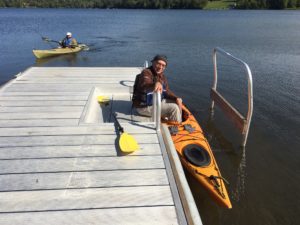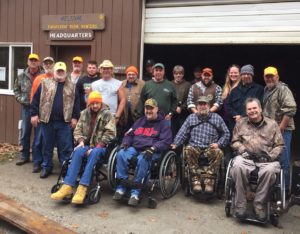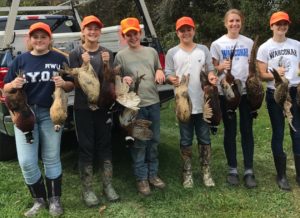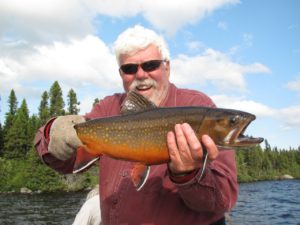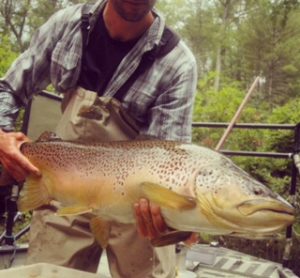According to MassWildlife, a coyote attacked 2 people in North Attleboro on November 20, 2017 while police were responding to calls about a coyote acting oddly. The North Attleboro police killed the coyote and sent it to the Department of Public Health (DPH) for rabies testing. Subsequently, DPH test results confirmed the coyote was rabid. MassWildlife is reminding the public to report any unusual animal behavior to local authorities and to take specific actions which reduces contact with coyotes.
In a recent press release, they stated that attacks by coyotes on people are a rare and unusual event. The North Attleboro attacks are the eighth and ninth documented attacks on people by coyotes since the 1950’s. Of the seven prior attacks, two coyotes were confirmed as rabid and three others were suspected as rabid, but the animals could not be captured for testing. The last coyote attack on a person was in the town of Kingston in 2015.
Rabies is a very serious disease affecting the nervous system of mammals, including cats, dogs, raccoons, coyotes, foxes, and people. Rabies is caused by a virus and is almost always fatal. The virus found in saliva is usually spread from animal to animal or to people through bites. People who have been bitten or scratched by a potentially rabid animal should contact their health care provider. In most cases, immediate treatment for rabies exposure is necessary. If a pet has been attacked, owners should contact their veterinarian for advice.
MassWildlife urges the public to report any observations of wild or domestic mammals displaying symptoms of this fatal disease to local animal control officers. There are two kinds of symptoms, the “furious form” and the “dumb form”. Furious form symptoms include aggressive attacks on people or other animals, or random biting of objects. Dumb form symptoms are exhibited by animals acting sick, dazed, or paralyzed.
Rabies in coyotes is relatively uncommon. Since 2014, the Massachusetts Department of Public Health (DPH) has tested 14 coyotes for rabies. Cumulative reports from the DPH summarizing rabies testing from 1992-2002 and annual reports from 2003 to 2016 are available on the DPH website and can be found at www.mass.gov/dph/rabies.
Coyotes live in rural, suburban, and urban areas throughout Massachusetts except for Nantucket and Martha’s Vineyard. Coyotes thrive where people live because there is a lot of food available–including garbage, fruit trees, bird seed, and suet. Small pets as well as wildlife attracted to birdfeeders are also a potential meal for coyotes. Coyote attacks on pets are not unusual; loose pets are at risk of attack by coyotes or other wildlife. Cats and small dogs are viewed as a potential meal for coyotes, while larger dogs, especially when off-leash, may be viewed by coyotes as a threat.
Interestingly, the subject of a recent rash of fox and raccoon rabies incidents in the Northern Berkshires was discussed during the October Meeting of the Berkshire County League of Sportsmen. Sportsmen were advised to be aware and forewarned.
To prevent contact with coyotes, MassWildlife recommends the following actions:
Remove all types of food: Coyotes eat bird seed, suet, and the small wildlife attracted to feeders. They also raid garbage and compost piles. Secure garbage in plastic containers with tight fitting lids and keep them secure. Take out trash when the morning pick-up is scheduled, not the previous night. Remove bird feeders.
Stay outside with your pet: Pet owners should be present outside with their pets at all times and keep them under control, preferably on a leash. Unsupervised pets left outdoors are at risk of attack by coyotes or other animals. The presence of a human generally discourages coyotes.
For more tips on avoiding problems with coyotes, see MassWildlife’s Living With Coyotes Fact Sheet.
Coyote Derby
Dave’s Sporting Goods in Pittsfield is having its Coyote Derby again this year. It will run until the end of coyote hunting season which is March 8, 2018. Entrance fee is $10 and prizes will be awarded to the person who bags the most coyotes, the largest coyote and there will also be a random draw.
Don’t import deer from out of state
To keep Chronic Wasting Disease (CWD) from spreading to Massachusetts, it is illegal to import deer parts (from any deer species) from states or provinces where CWD has been detected. This includes OH, MD, NY, PA, VA, WV, and many other states. Live deer of any species may not be brought into Massachusetts for any purpose. It is legal to bring in deboned meat, clean skull caps, hides without the head, or a fixed taxidermy mount.
CWD is a contagious neurological disease that is 100% fatal to all cervids, including deer, elk, and moose. It attacks the brains of infected animals, causing them to exhibit abnormal behavior, become emaciated, and eventually die. Infected deer can spread the infectious agents through urine, feces, saliva, etc. for months before showing clinical symptoms. The infectious agents are in very high concentrations in the brain and spinal tissue, so an infected carcass left on the landscape can be a major problem. The infectious agents can remain in the soil for over 10 years and can be taken up into the leaves of plants that deer eat.
If you see a deer or moose in Massachusetts exhibiting any signs of this disease or any other disease, please contact MassWildlife at (508) 389-6300.
So far, no CWD infected deer have been found in Massachusetts. Let’s try to keep it that way.
IDPA
The International Defensive Pistol Association will be holding a 2-Gun match on Sunday, December 10, weather permitting, at the Lee Sportsmen’s Association. It starts at 12:00 pm and ends at 4:30 pm. Shotgun and/or pistol, 3 stages, 30 #7 shot shell 150 pistol. Contact ssullee@icloud.com for more information. Also, all scheduled event information is listed at www.leesportsmen.com.
TU Holiday Party
The Taconic Chapter of Trout Unlimited is having its annual Holiday Party on Thursday, December 14 at the Crissey Farm @ Barrington Brewery, 420 Stockbridge Rd, Great Barrington. For the first time in chapter history, it’s Holiday party will be opened to the general public. It will be a buffet dinner which costs $30 pp. Social Hour with hors d’oeuvres at 5:30 PM. The event features a Door Prize and Donation Bucket Raffle. For more information call Bill Travis at (413)-447-9720 or email: traviswdt547@gmail.com. Reservations must be made by December 9.


